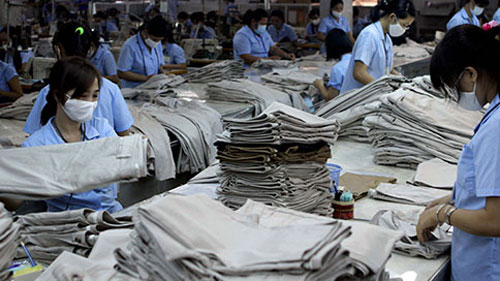The Vietnamese economy is poised for ‘exponential’ strong growth with the signing of a number of free trade agreements (FTA) in the offing.
The trade pacts, once signed, will open up new horizons for high quality Made-in-Vietnam products to penetrate expanded and diversified markets while simultaneously permitting the country to reduce its overdependence on certain markets. Most notably among them is the Trans-Pacific Partnership (TPP) agreement, which is currently in its 20th round of negotiations. Member countries are currently negotiating to eliminate 100% of tariffs on imports, of which 90% of the tariffs will be abolished immediately with the remaining 10% removed following a moratorium period of up to 10 years. TPP member countries account for the preeminent market in the world as collectively they will account for 40% of global GDP and 30% of the total global import-export revenue. Once the agreement is signed, Vietnamese products will have ample opportunities to directly penetrate powerful markets including the The Vietnamese garment sector is expected to cash in on the TPP agreement. Roughly 1,000 tax lines on garment products exported to the However, to benefit from the trade pact, the garment sector must meet certain conditions, such as certificate of origin (C/O) on materials used in the intra-bloc. Secretary General of the Vietnam Textile and Apparel Association (Vitas) Dang Phuong Dung says this is not necessarily going to be an easy task. Garment businesses must renovate technology, invest in material production, create closed process ranging from fibre, textile, dying and garment, and raise the proportion of domestic material use and added value for products to grasp TPP’s advantages, Dung says. The most challenging requirement for In addition, she adds, Vitas is preparing to train and shift from doing outsourcing to modern production methods to increase added value for products. This year, These agreements will help Chairman of the Vietnam International Arbitration Center Tran Huu Huynh says strict requirements from these agreements force domestic businesses to improve their competitiveness to join the global value chain and play by the rules. “Over the past several decades, they have not really bettered themselves. These agreements will offer both opportunities and challenges for them to rise up,” Huynh said. On the other hand, Machinery and equipment imports from the EU rose from US$2.6 billion in 2005 to US$7.6 billion 2010. Tariff cuts will help Minister of Industry and Trade Vu Huy Hoang says the Government’s guideline is to diversify new import-export markets to avoid overdependence on any one partner to the greatest extent possible. If negotiations are successful, there will be greater potential for Vietnamese exports to penetrate global markets tax incentives and simplified administration procedures, Hoang says. “The Government will create a niche for businesses to accelerate exports more stably and sustainably,” Hoang notes. Experts warn that when these key trade pacts are signed, The Government should also soon issue support policy guidelines for garment, footwear and agricultural businesses to fully exploit advantages from FTAs. VOV |
↧
Article 15
↧
